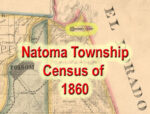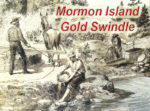It was wrong for government employees to use the n-word on official maps. Those people perverted history by inserting their bias against Black men and women. I’m not sure why the public display of the n-word was left in the exhibit that I visited. Perhaps, it was an oversight. I hope it was not a rationalization that the handwritten note of the n-word on the map was somehow historic in nature. While racism is historically significant, as historians we do not have to promote it in a public exhibit.











